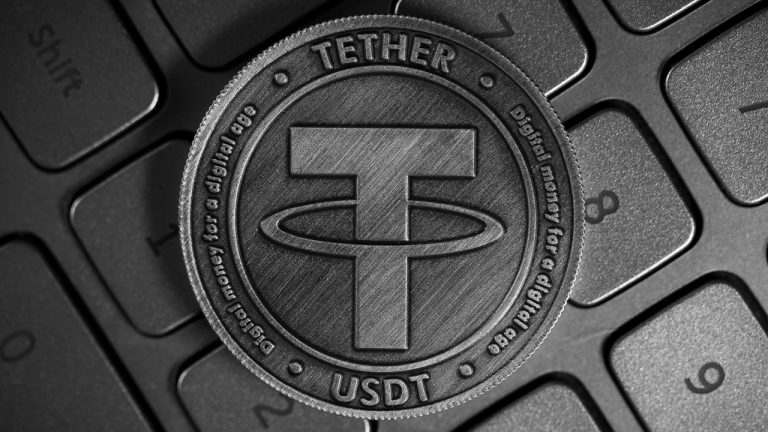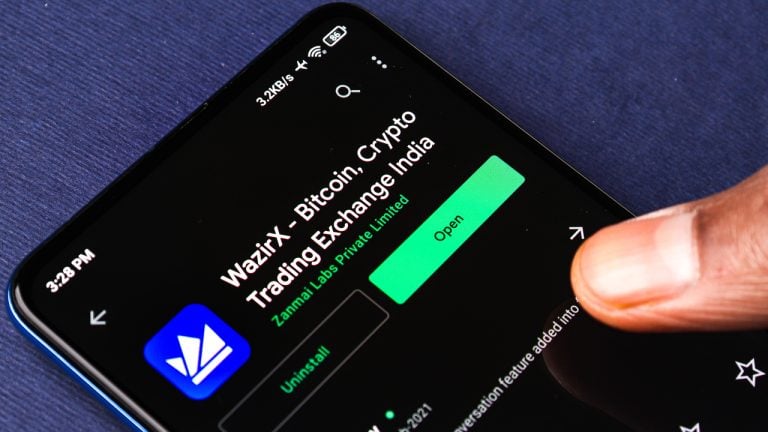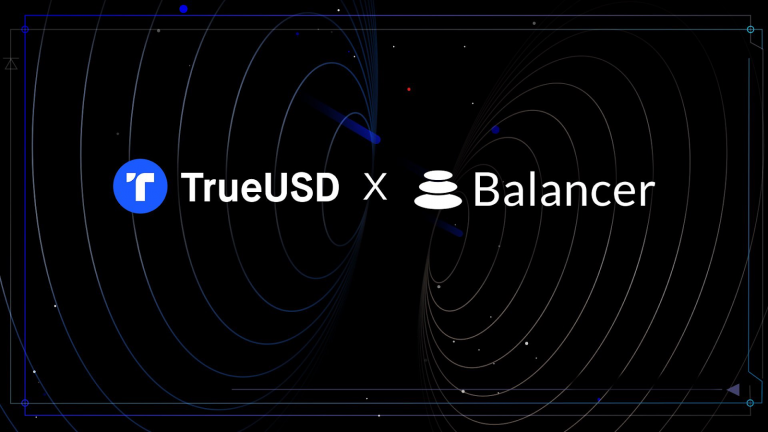 During the last month, the market capitalization of all the stablecoins in existence dropped by more than 2%, shedding roughly $2.98 billion since the end of October. Statistics show that tether, the largest stablecoin by market valuation, saw its market cap lose more than 5% during the last 30 days. Tether’s market cap slipped from […]
During the last month, the market capitalization of all the stablecoins in existence dropped by more than 2%, shedding roughly $2.98 billion since the end of October. Statistics show that tether, the largest stablecoin by market valuation, saw its market cap lose more than 5% during the last 30 days. Tether’s market cap slipped from […] Over three billion in value was erased from the stablecoin economy during the past 30 days. The trend occurred despite the number of tethers in circulation rising by 2.2% last month. On Oct. 1, 2022, tether’s market capitalization was approximately $67.95 billion, and it’s risen to $69.36 billion since then. Circle’s usd coin, on the […]
Over three billion in value was erased from the stablecoin economy during the past 30 days. The trend occurred despite the number of tethers in circulation rising by 2.2% last month. On Oct. 1, 2022, tether’s market capitalization was approximately $67.95 billion, and it’s risen to $69.36 billion since then. Circle’s usd coin, on the […] The crypto asset exchange Wazirx is following Binance’s move by delisting a number of stablecoins and automatically converting them to BUSD at a 1:1 ratio. Wazirx customers have until September 23 to withdraw their stablecoins if they don’t want the funds converted. Wazirx Plans to Drop 3 Stablecoins and Auto-Convert Them to BUSD by October […]
The crypto asset exchange Wazirx is following Binance’s move by delisting a number of stablecoins and automatically converting them to BUSD at a 1:1 ratio. Wazirx customers have until September 23 to withdraw their stablecoins if they don’t want the funds converted. Wazirx Plans to Drop 3 Stablecoins and Auto-Convert Them to BUSD by October […] On September 5, Binance explained that it planned to drop a number of usdc trading pairs and auto-convert specific stablecoin balances into busd by September 29. While the move was controversial among crypto proponents on social media, Circle Financial CEO Jeremy Allaire explained that the change “will likely lead to more usdc flowing to Binance.” […]
On September 5, Binance explained that it planned to drop a number of usdc trading pairs and auto-convert specific stablecoin balances into busd by September 29. While the move was controversial among crypto proponents on social media, Circle Financial CEO Jeremy Allaire explained that the change “will likely lead to more usdc flowing to Binance.” […] PRESS RELEASE. Singapore, Singapore / April 4th / – TrueUSD (TUSD) and Balancer (BAL) Automated Market Maker (AMM) partnered up with Polygon to offer liquidity providers with TUSD and BAL rewards from a stablecoin pool incentive program last November. The program incentivizes liquidity providers to add TUSD-DAI-USDC-USDT liquidity to the Polygon ecosystem. In return for […]
PRESS RELEASE. Singapore, Singapore / April 4th / – TrueUSD (TUSD) and Balancer (BAL) Automated Market Maker (AMM) partnered up with Polygon to offer liquidity providers with TUSD and BAL rewards from a stablecoin pool incentive program last November. The program incentivizes liquidity providers to add TUSD-DAI-USDC-USDT liquidity to the Polygon ecosystem. In return for […]
The Hong Kong Monetary Authority shared a list of eight questions to seek policy-related recommendations citing five possible regulatory outcomes — no action, opt-in regime, risk-based regime, catch-all regime and blanket ban.
Hong Kong's central banking institution, the Hong Kong Monetary Authority (HKMA), released a questionnaire to gauge public opinion on regulations for crypto-assets and stablecoins. The state-backed regulator intends to establish a regulatory framework by 2023-24.
HKMA’s “Discussion Paper on Crypto-assets and Stablecoins” highlights the explosive growth of the stablecoin market in terms of market capitalization since 2020 and the concurrent regulatory recommendations put forth by international regulators including the United States’ Financial Action Task Force (FATF), the Financial Stability Board (FSB) and The Basel Committee on Banking Supervision (BCBS).

According to the HKMA, the current size and trading activity of crypto-assets may not pose an immediate threat to the stability of the global financial system from a systemic point of view. However, the discussion paper warned:
“The growing exposure of institutional investors to such assets as an alternative to or to complement traditional asset classes for trading, lending and borrowing [...] indicate growing interconnectedness with the mainstream financial system.”

Based on the above figure, HKMA’s paper shows that the global market capitalization stood at about $150 billion in December 2021, “representing about 5% of the overall crypto-asset market.” The regulator has also shared a list of eight questions to seek policy-related recommendations citing five possible regulatory outcomes — no action, opt-in regime, risk-based regime, catch-all regime and blanket ban:

HKMA expects stakeholders to submit their responses by 31st March 2022, and aims “to introduce the new regime no later than 2023/24.”

On an end note, the regulator stated that payment-related stablecoins have a higher potential for being incorporated into the mainstream financial system or even day-to-day commercial and economic activities.
As a result, the HKMA considers expanding the scope of the Payment Systems and Stored Value Facilities Ordinance (PSSVFO), a law that determines the legality of financial products.
Related: Hong Kong real estate giant leads $90M raise for crypto bank Sygnum
Complementing the local government’s pro-crypto intentions, one of Hong Kong’s largest property developers Sun Hung Kai invested $90 million in Sygnum, a Swiss bank dedicated to digital asset holding.
As Cointelegraph reported, the Series B funding round brings Sygnum’s post-money valuation to $800 million, marking a tenfold surge in consolidated revenues from 2021.

Despite the tumble in stablecoin activity, average transactions of stablecoins DAI and UST still exceed those of USDT and USDC.
Stablecoin usage lost steam amid the recent crypto market downturn. From peaking at nearly $2 billion on May 19, the daily transaction volume has fallen off its 2021 average by about 60%. The significant drop begs the question about stablecoin activity in the current market environment.
Unsurprisingly, the two cryptocurrencies that remain in a tight race for stablecoin dominance are Tether (USDT) and USD Coin (USDC). However, the market holds a fine distinction between the two, particularly with their corresponding reserve holding.

Credit rating agency Fitch Ratings even warned recently about Tether's risk triggering a destabilization in short-term credit markets, since its reserves are not all in cash. On the other hand, Fitch cites USDC as an example of a fully backed safe asset since it keeps the United States dollars on a one-to-one basis in custody accounts.
Still, users flock to Tether for a number of purposes. Data from Covalent reveals that Tether exceeded the total transactions of USDC by at least 500,000. USDT had 2.9 million total transactions from January to June while USDC had 2.4 million. But in terms of dollar volume, USDC beats Tether, $21.4 billion to $19.3 billion, respectively.
Moreover, there are some signs of institutional avoidance of Tether. Rather, institutional users seem to prefer using MakerDAO’s DAI, even though USDT has exceeded DAI’s total number of transactions and total trading volume by a long shot.
Data from Covalent shows that DAI's average transaction value was $50,000 at its peak in May, which was the highest swap value of all stablecoins. With this record, DAI also outperforms other stablecoins by average swap size, hitting around $10,900. In contrast, Tether seems to be the top choice of smaller retail accounts, with its average transaction value of $6,600.
One more outlier is TerraUSD (UST), another U.S. dollar stablecoin that pales in comparison to Tether and USDC's volume, but outshines the two, much like DAI, in average transaction value. UST averages $10,660 per swap, denoting the preference of bigger accounts for this stablecoin.

However, UST only ranks fourth among stablecoins by the number of swaps, comprising just 2% of the swaps facilitated by the leader, USDT.
Among the two major stablecoins, Tether outpaces USDC by roughly 500,000 swaps. However, USDC outpaces Tether by average swap size of around 33%, which provides USD Coin an advantage by the total swap value.
Download the 26th issue of Cointelegraph Consulting Bi-weekly Newsletter in full, complete with charts, market signals as well as news and overviews of fundraising events.
Data also looks into which DEX has the most stablecoin trading volume, and the numbers point to Uniswap. The first half of the year saw Uniswap tower above the number of stablecoin transactions at SushiSwap. In January, Uniswap closed in on 1.4 million daily swaps versus SushiSwap's roughly 200,000.
Uniswap v2 powers 88% of all stablecoin swaps and still remains an enviable spot for transactions, despite the rollout of Uniswap v3 back in May. It has become evident that Uniswap is more of a go-to for stablecoin liquidity.
With an average transaction volume of several thousand dollars, Ethereum's ever-growing transaction fees do not seem to be a problem. However, as stablecoins garner mainstream adoption and the average stablecoin transaction volume decreases, users may look to more affordable stablecoin blockchains.
Cointelegraph’s Market Insights Newsletter shares our knowledge on the fundamentals that move the digital asset market. With market intelligence from one of the industry’s leading analytics providers, Covalent, the newsletter dives into the latest data on social media sentiment, on-chain metrics and derivatives.
We also review the industry’s most important news, including mergers and acquisitions, changes in the regulatory landscape, and enterprise blockchain integrations. Sign up now to be the first to receive these insights. All past editions of Market Insights are also available on Cointelegraph.com.
 As Signature Bank expands its commercial banking offerings, the trueusd stablecoin has been integrated with its Signet blockchain-based digital payment platform to deliver instant dollar payments. Signet Integration to Deliver 24/7 Dollar Payment and Settlement As more enterprises flirt with the idea of blockchain-based products and services, stablecoins are one of the areas of fascination […]
As Signature Bank expands its commercial banking offerings, the trueusd stablecoin has been integrated with its Signet blockchain-based digital payment platform to deliver instant dollar payments. Signet Integration to Deliver 24/7 Dollar Payment and Settlement As more enterprises flirt with the idea of blockchain-based products and services, stablecoins are one of the areas of fascination […]